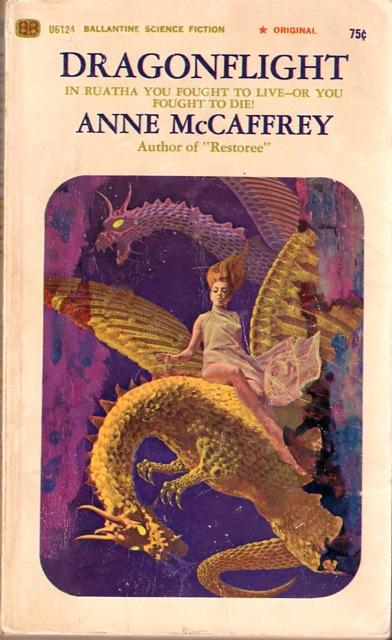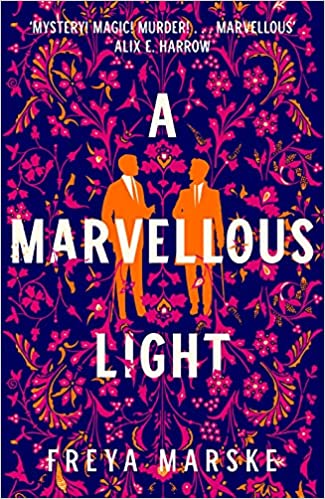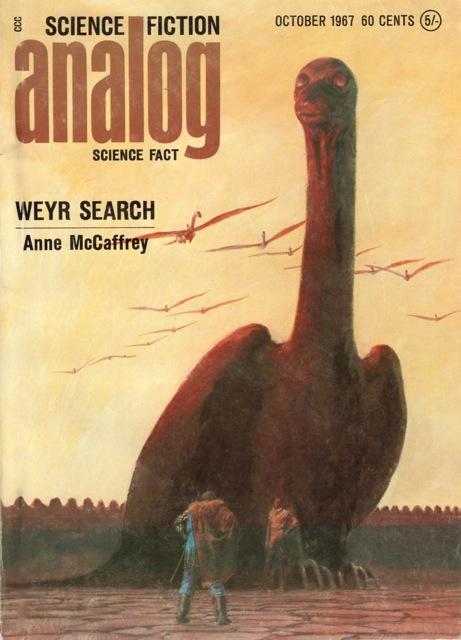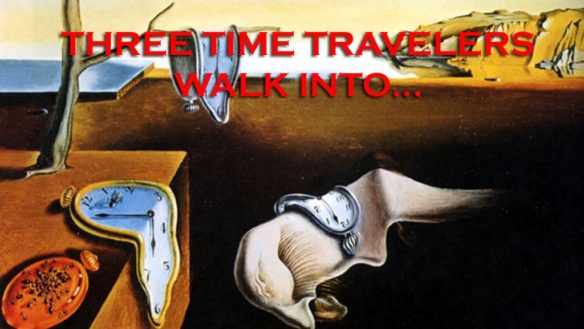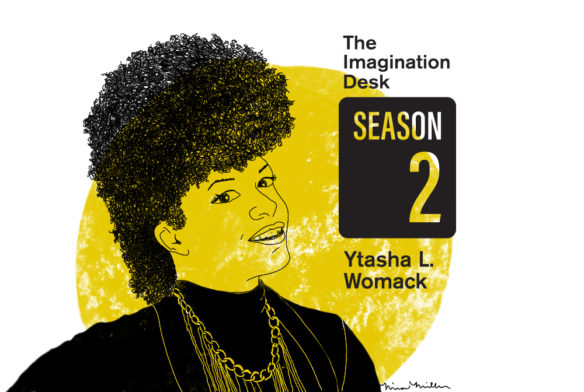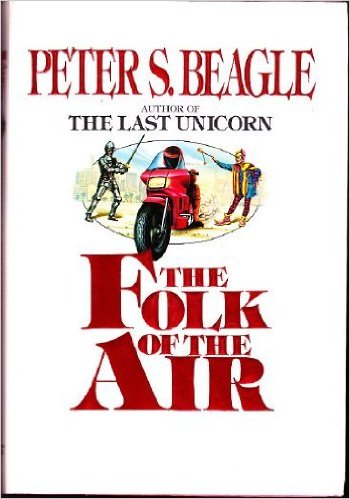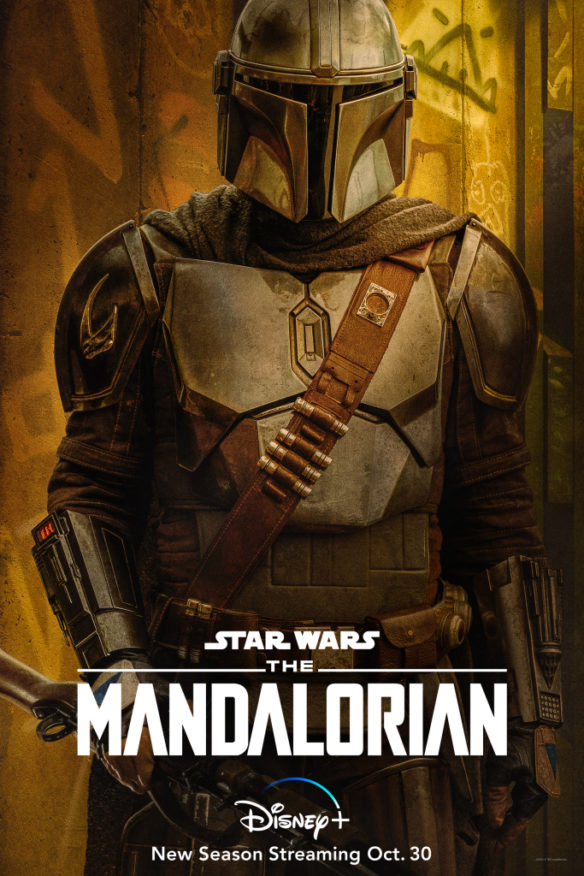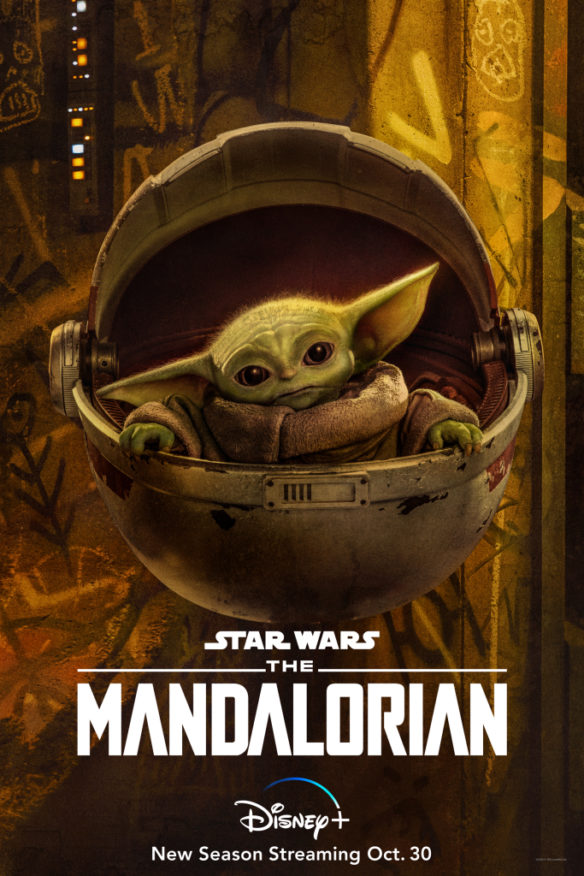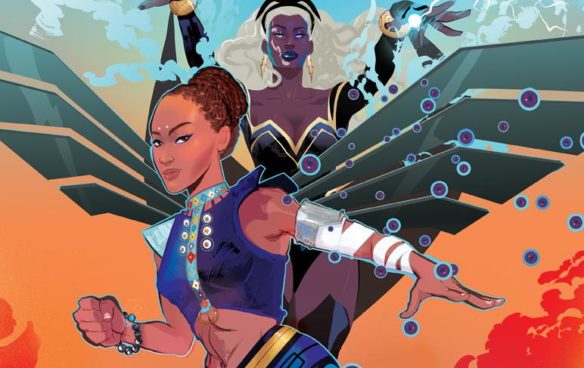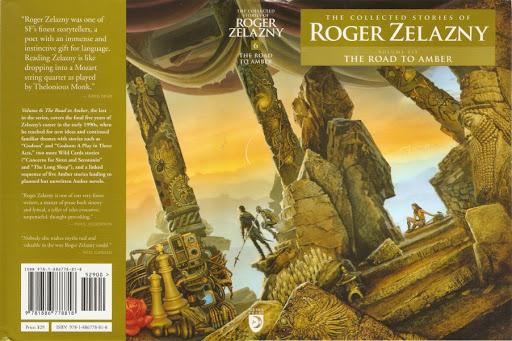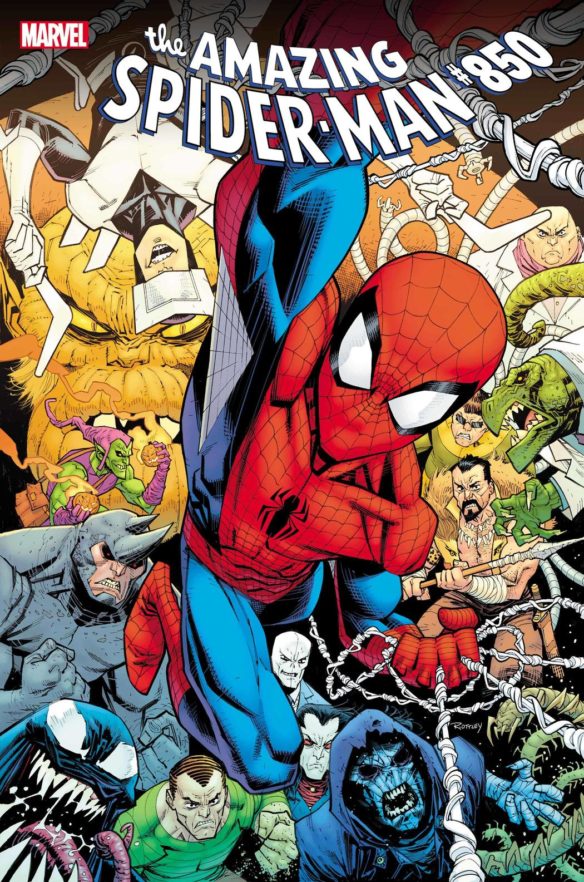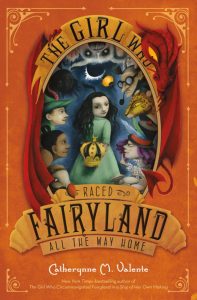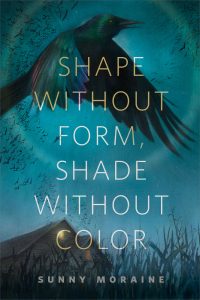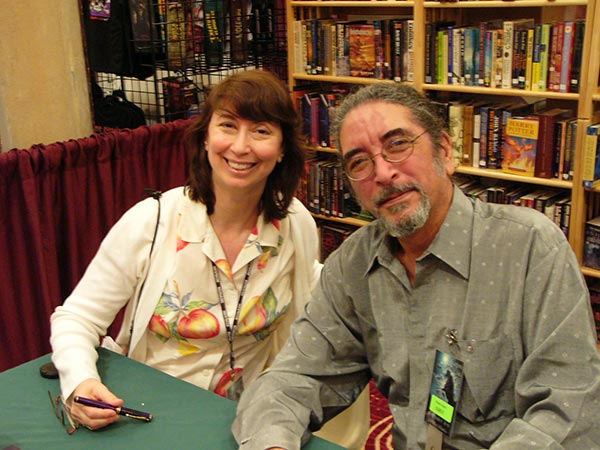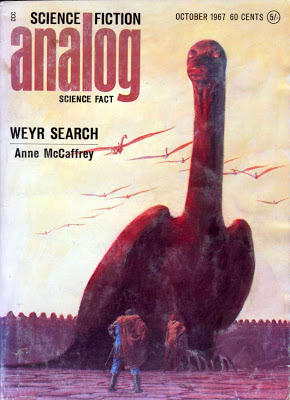(1) HE FALL DOWN BUT NOT GO BOOM. [Item by Mike Kennedy.] Job #1 — Stick the landing. Oops. “Odysseus: Moon lander tipped over at touchdown, limiting the data it’s sending”.– AP News has the story. (Captain Kirk was not available for comment.)
A private U.S. lunar lander tipped over at touchdown and ended up on its side near the moon’s south pole, hampering communications, company officials said Friday.
Intuitive Machines initially believed its six-footed lander, Odysseus, was upright after Thursday’s touchdown. But CEO Steve Altemus said Friday the craft “caught a foot in the surface,” falling onto its side and, quite possibly, leaning against a rock. He said it was coming in too fast and may have snapped a leg.
“So far, we have quite a bit of operational capability even though we’re tipped over,” he told reporters.
But some antennas were pointed toward the surface, limiting flight controllers’ ability to get data down, Altemus said. The antennas were stationed high on the 14-foot (4.3-meter) lander to facilitate communications at the hilly, cratered and shadowed south polar region….
(2) FAMOUS LA MOVIE THEATER NOW HAS FAMOUS OWNERS. The New York Times learns “Star Directors Buy Los Angeles Cinema With Plan for ‘Coolest AV Club’”.

With the moviegoing experience under threat from streaming services and ever-improving home entertainment options, a group with a passionate interest in its preservation — three dozen filmmakers who create their works for the big screen, to be enjoyed in the company of large audiences — has decided to do something about it.
The group of directors, led by Jason Reitman — whose films include “Juno,” “Up in the Air” and “Ghostbusters: Afterlife” — announced Wednesday that it had bought the Village Theater in the Westwood neighborhood of Los Angeles, which was put up for sale last summer to the concern of film buffs. The group, which also includes Christopher Nolan, Steven Spielberg, Lulu Wang and Alfonso Cuarón, among others, plans to restore the 93-year-old movie palace, which features one of the largest screens in Los Angeles.
“I think every director dreams of owning a movie theater,” Reitman said in an interview. “And in this case, I saw an opportunity to not only save one of the greatest movie palaces in the world, but also assembled some of my favorite directors to join in on the coolest AV club of all time.”
The announcement of the directors group buying the Village Theater, which has long been a favorite venue for premieres, follows on the heels of Quentin Tarantino’s recent purchase of the Vista Theater in the Los Angeles neighborhood of Los Feliz….
(3) TO MESSIAH OR NOT TO MESSIAH, THAT IS THE QUESTION. [By Mike Kennedy.] David Fear, writing for Rolling Stone, seems absolutely agog over Dune: Part Two. And eager for Part Three.
His review is chock full of spoilers if you don’t know the plot already (but I suspect most of you do). It’s easily arguable, though, that there are some spoilers for elements of the movie itself. So, read the review at your own risk. “‘Dune: Part Two’ Is Bigger, Bolder — and Yes, Even Better — Than Part One”. Here’s a non-spoilery excerpt:
… For some, these names may ring bells way, way back in your memory banks; mention that they’re characters played by Timothée Chalamet, Zendaya, Oscar Isaac, and a who’s-who of equally recognizable actors, and you’ll see the lights go on in their eyes. For others, the heroes and villains, mentors and monsters that populate Frank Herbert’s 1965 cult novel are old friends, their exploits etched into readers’ brains like gospel. One of the great things about Dune, Denis Villeneuve’s 2021 partial adaptation of that original book, was that you could take in its story and swoon over its imagery regardless of where you fell on the scale. It’s a classic hero’s-journey tale of — to paraphrase author/film professor Howard Suber — a kid rescued from his fate and put on the path toward his destiny. And it was the sort of faithful yet bold, properly bonkers realization of the novel for the screen that fans had been dying to see, the perfect melding of artist and material….
(4) CHINESE FAN ANALYZES SOME OF THE CHINESE WORKS ON THE NOMINATION REPORT. An English language blog post by Chinese fan Prograft follows on from the Heather Rose-Jones/Camestros Felapton report, covering the Chinese works that appeared in the prose fiction categories, excluding those in the SF World recommendation list. “More on Other Chinese Hugo Nominations, based on ‘Charting the Cliff’”.
They suggest that perhaps some of the Chinese works that appeared in the “Validation” report for Best Series, but not in the nomination statistics, may not have been eligible according to the Best Series rules. This, of course, would not explain why those works disappeared between the “Validation” spreadsheet and the actual nomination statistics report.
Prograft’s article also links to (Chinese language) Weibo posts from early March 2023, which discuss why there had not been much by way of self-promotion by Chinese authors at that point in time. (The SF World list did not appear until April; another from 8 Light Minutes was published on March 27.)
(5) MEANWHILE, BACK AT 2014. Camestros Felapton says, “Larry is cross that I’m not writing about him”.
… From time to time key Puppy figures would dally with the idea that the way the Hugo vote was administered was rigged against them, particularly when they lost, but the repeated substance of their complaint was that the MEMBERSHIP was rigged against them, i.e. it was cliques of voters and publisher buying memberships for the vast number of employees that they imagined publishers have.
So no, Larry didn’t “warn us” nor has the 2023 Hugo scandal validated the core of his complaints about the Hugo Awards.
(6) CLIFF NOTES. Noreascon II in 1980 was the first Worldcon required by the WSFS Constitution to report the Hugo voting statistics (though not the first to disclose some of them). Kevin Standlee, with the help of The Hugo Award Book Club, discovered File 770 issue 24 published partial 1980 Hugo Award final voting and nominating statistics. He’s uploaded a copy to the Hugo Awards website and added a link to the 1980 Hugo Awards page. This quote about the margin for error caught my eye:
Note on counting procedure. After initial validation of the ballots, the data were keypunched by a commercial firm, (Only in the Gandalf [Award] vote was every ballot proofread against the printout; but nearly all keypunching errors were flagged by the computer, and in any other category the residual errors should be less than about 5 cards.) The votes were then counted by computer, using a counting program written by Dave Anderson.
There were 1788 valid final ballots cast that year. The reason for proofing the Gandalf votes is that it was the only category which ran close enough for a potential five-vote error to change the winner. Ray Bradbury ended up outpolling Anne McCaffrey 747-746.
(7) STAR TREK: DISCOVERY SEASON 5. Paramount+ dropped a trailer for Star Trek: Discovery Season 5.
(8) NOW WE KNOW WHO WROTE THE BOOK OF LOVE. Amal El-Mohtar reviews Kelly Link’s The Book of Love in the New York Times: “Kelly Link Returns with a Dreamlike, Profoundly Beautiful Novel”.
A certain weight of expectation accrues on writers of short fiction who haven’t produced a novel, as if the short story were merely the larval stage of longer work. No matter how celebrated the author and her stories, how garlanded with prizes and grants, the sense persists: She will eventually graduate from the short form to the long. After an adolescence spent munching milkweed in increments of 10,000 words or less, she will come to her senses and build the chrysalis required for a novel to emerge, winged and tender, from within.
Now Kelly Link — an editor and publisher, a recipient of a MacArthur “genius grant” and the author of five story collections, one of which was a Pulitzer Prize finalist — has produced a novel. Seven years in the making, “The Book of Love” — long, but never boring — enacts a transformation of a different kind: It is our world that must expand to accommodate it, we who must evolve our understanding of what a fantasy novel can be.
Reviewing “The Book of Love” feels like trying to describe a dream. It’s profoundly beautiful, provokes intense emotion, offers up what feel like rooted, incontrovertible truths — but as soon as one tries to repeat them, all that’s left are shapes and textures, the faint outlines of shifting terrain….
(9) RETURN TO NEW WORLDS. [Item by SF Concatenation’s Jonathan Cowie.] SF² Concatenation has an advance post up ahead of next season’s edition. An October 1955 edition of New Worlds provides an excuse to explore that magazine’s history and some of the SF professionals of that era.
You never know what is around the corner. There I was, at my local SF group, quietly enjoying a pint, when a friend brings in a copy of New Worlds magazine, issue no. 40 dating from October 1955 and this opened a window into Britain’s SF scene of that time. Let me share…
Click here for the full “New Worlds magazine revisited” article.

(10) CHRISTOPHER NOLAN AND KIM STANLEY ROBINSON CONSIDERED. Imaginary Papers Issue 17 is out. The quarterly email newsletter from the Center for Science and the Imagination at Arizona State University covers science fiction worldbuilding, futures thinking, and the imagination.
In this issue, Erin K. Wagner writes about the interplay between art and science in Christopher Nolan’s films, especially Oppenheimer and Interstellar; Joe Tankersley celebrates the “subtle utopia” of Kim Stanley Robinson’s 1990 novel Pacific Edge; and we discuss the Necessary Tomorrows podcast, which pairs original science fiction stories with nonfiction analysis of sociotechnical issues.
Subscriptions are free.

(11) RAMONA FRADON (1926-2024). “Comic Book Creator Ramona Fradon Has Died, Aged 97” reports Bleeding Cool. She only just retired in January!
Comic book creator Ramona Fradon has died at the age of 97. Her agent, Catskill Comics, posted the news earlier today. “It comes with great sadness to announce that Ramona Fradon has passed away just a few moments ago. Ramona was 97 and had a long career in the comic book industry, and was still drawing just a few days ago. She was a remarkable person in so many ways. I will miss all the great conversations and laughs we had. I am blessed that I was able to work with her on a professional level, but also able to call her my friend. If anyone wishes to send a card to the family, Please feel free to send them to Catskill Comics, and I’ll be happy to pass them along. You can send cards to Catskill Comics “Fradon Family”, Po Box 264, Glasco, NY 12432″
(12) TODAY’S BIRTHDAY.
[Written by Cat Eldridge.]
Born February 24, 1957 — Edward James Olmos, 67. Where I first experienced the acting of Edward James Olmos was as Detective Gaff in Blade Runner, a role I see he reprised in Blade Runner 2049.

No, I’ve not seen the latter film, nor do I have any intention in doing so as I consider Blade Runner one of the finest SF films ever done and nothing will sully that for me. We gave it a Hugo at ConStellation, so there later films!
It wasn’t his first genre film as that was the Japanese post-apocalyptic science fiction film Virus (1980), but his first important role came in Wolfen (1981), a fascinating horror film about, possibly, the idea that werewolves are real, or maybe not, in which he was Eddie Holt who claims to a shapeshifter.
He has an almost cameo appearance in Even Cowgirls Get the Blues as a musician at the barbecue.
It was supposed to have a theatrical release but that was not to be, so Ray Bradbury’s The Wonderful Ice Cream Suit was released directly to video. In it Olmas was Vámonos. I’ve not seen it. It sounds, well, intriguing. Who’s seen it?

He’s in the debacle that was The Green Hornet in one of the primary roles as Mike Axford, the managing editor of The Daily Sentinel.
As you most likely know, he was William Adama on the rebooted Battestar Galactica. At seventy-three episodes, it didn’t even come close to his run on Miami Vice as Lt. Martin Castillo which was one hundred and six episodes. Now there was an interesting character!

I’ll end this Birthday note by note noting he had a recurring role on Marvel’s Agents of S.H.I.E.L.D. as Robert Gonzales.
(13) COMICS SECTION.
- Non Sequitur provides a break.
- Pearls Before Swine has a reaction to a publisher.
- Reality Check demonstrates the danger of nitpicking.
(14) SHRINKAGES AND DISAPPEARANCES. [Item by Kathy Sullivan.] Paper newspapers have been dropping comic strips. But the latest cuts are those by women creators. The Daily Cartoonist explains why “The Real Gannett Conspiracy = Chauvinism”.
In one of my answers in the comments section of The Great Gannett Comics Conspiracy I sarcastically said, “It’s like saying Gannett dropped Between Friends because they are misogynistic.”
Further analysis suggests that may not be far from right….
(15) MARVEL MUST-HAVES. Announced at ComicsPRO the Comic Industry Conference, Marvel Comics’ MARVEL MUST-HAVES! These FREE issues collect multiple iconic issues that spotlight the Marvel characters and comic book series currently at the forefront of pop culture. These stories have been handpicked to get fans in-tune with current Marvel adventures, and act as perfect jumping on points for new readers too. That’s more than 80 pages of comic book adventures for free, available at comic shops next month. [Based on a press release.]

SPIDER-MAN/DEADPOOL #1 (2016)
It’s action, adventure and just a smattering of romance in this epic teaming up the Webbed Wonder and the Merc with a Mouth! Talk about a REAL dynamic duo! Brought to you by two Marvel superstars—Joe Kelly and Ed McGuinness—it’s a perfect tale for those looking forward to the Deadpool’s return to the big screen.
Dive into the full story in SPIDER-MAN/DEADPOOL MODERN ERA EPIC COLLECTION: ISN’T IT BROMANTIC? TPB (9781302951641)
IMMORTAL THOR #2 (2023)
An Elder God of the Utgard-Realm had marked Thor for destruction – and a city with him. Yet the only power that could prevail carried its own terrible price. This is the story of THE IMMORTAL THOR…and the hour of his greatest trial. Following his masterful work on Immortal Hulk, Al Ewing is breaking mythology yet again in this acclaimed new run of the God of Thunder. Featuring breathtaking artwork by superstar Martin Coccolo.
Dive into the full story in IMMORTAL THOR VOL. 1: ALL WEATHER TURNS TO STORM TPB (9781302954185)
MS. MARVEL: THE NEW MUTANT #1 (2023)
Resurrected back into this world of hate and fear, Kamala Khan has a secret mission to pull off for the X-Men, all the while struggling to acclimate to this new part of her identity! Co-written by the MCU’s own Kamala, Iman Vellani, and Sabir Pirzada of both Dark Web: Ms. Marvel and her Disney+ series! Don’t miss this exciting evolution for one of Marvel’s brightest young heroes!
Dive into the full story in MS. MARVEL: THE NEW MUTANT VOL. 1 TPB (9781302954901)
(16) THE SINCEREST FORM OF FLATTERY? Or just a ripoff. Behind a paywall at The Sunday Times: “BBC accused of plagiarising new series from Spanish drama”. Brief excerpt:
The Ministry of Time bears a striking resemblance in title and plot to El Ministerio del Tiempo
The BBC will be asked for “explanations” from the Spanish state broadcaster after allegations of plagiarism over a new British television series.
The commissioning of the BBC’s The Ministry of Time was announced this week, described as an “epic sci-fi, romance and thriller” that is “utterly unique”.
Based on an as yet unpublished debut novel by Kaliane Bradley, it is about a newly established government department, the Ministry of Time, which gathers “expats” from across history to experiment how viable time travel would actually be.
The striking resemblance, however, in title and plot to the Spanish series El Ministerio del Tiempo — The Ministry of Time — created by Javier and Pablo Olivares and broadcast by RTVE between 2015 and 2020, has prompted allegations of plagiarism.
The allegations have been made by Javier Olivares, who said that the BBC “had not changed a hair” of his creation, and also by scores of social media users….
(17) FLORIDA LEGISLATION WOULD RESTRICT SOME TEEN ACCESS. “Florida Passes Sweeping Bill to Keep Young People Off Social Media” – details in the New York Times.
New Florida rules would require social networks to prevent young people under 16 from signing up for accounts — and terminate accounts belonging to underage users.
…Florida’s Legislature has passed a sweeping social media bill that would make the state the first to effectively bar young people under 16 from holding accounts on platforms like TikTok and Instagram.
The measure — which Gov. Ron DeSantis said he would “be wrestling with” over the weekend and has not yet signed — could potentially upend the lives of millions of young people in Florida.
It would also probably face constitutional challenges. Federal courts have blocked less-restrictive youth social media laws enacted last year by Arkansas and Ohio. Judges in those cases said the new statutes most likely impinged on social media companies’ free speech rights to distribute information as well as young people’s rights to have access to it.
The new rules in Florida, passed on Thursday, would require social networks to both prevent people under 16 from signing up for accounts and terminate accounts that a platform knew or believed belonged to underage users. It would apply to apps and sites with certain features, most likely including Facebook, Instagram, Snapchat, TikTok and YouTube.
Last year, Utah, Arkansas, Texas and Ohio enacted laws that would require social media platforms to get permission from a parent before giving an account to a minor under 18 or under 16.
Florida’s effort would go much further, amounting to a comprehensive ban for young people on some of the most popular social media apps. It would also bar the platforms from showing harmful material to minors, including “patently offensive” sexual conduct….
(18) UP ALL KNIGHT. From The Hollywood Reporter: “‘Game of Thrones’ Spinoff ‘The Hedge Knight’ Gets 2025 Release Date”.
… Dunk and Egg keep journeying closer to their HBO debut.
On Friday, Warner Bros. Discovery CEO David Zaslav gave an update on the next Game of Thrones spinoff series: A Knight of the Seven Kingdoms: The Hedge Knight (a title that seems destined to be changed to something that doesn’t have “Knight” twice).
“[Creator and executive producer] George R.R. Martin is in preproduction for the new spinoff, A Knight of the Seven Kingdoms, which will premiere in late 2025 on Max,” Zaslav said.
The show is expected to begin production sometime this year.
Given that House of the Dragon is launching its second season this summer, the Knight of the Seven Kingdoms date next year raises the possibility of HBO settling into a flow of having a Thrones drama each year (assuming both shows can turn around their next seasons within two years)….
(19) ACADEMIC REPORT ON THE LANGUAGE USED BY THE CHENGDU BUSINESS DAILY. [Item by Ersatz Culture.] As is hopefully well-known by now, the Chengdu Business Daily organization – also known as Chengdu Economic Daily, which I believe is their “official” English name – provided a number of staff for the Chengdu concom in senior roles, including a Co-Chair, an Honorary Co-Chair, and members of the Hugo team.
I don’t want to get into why what is nominally a newspaper was so involved in running a science fiction convention here, but earlier today I came across a piece of academic research from 2017 that investigated how their journalistic output was summarized on Chinese social media. Although the authors of this report appear to be Chinese nationals from a Chengdu university, the study is in English.
A couple of extracts give examples of how CBD news stories were covered on their social media accounts. (The text from the study is left unaltered, other than reformatting for readability, and the censoring of an English language swear word.)
In all these samples, there were 23 cases of non-standardization, accounting for 7.7% of the total samples, including 10 cases of using ambiguous words, 6 cases of insufficient sentence composition, 3 cases of vulgar words, 2 cases of exaggerated titles, 1 case of non-standardized proverbs, 1 case of ambiguity. Specific reports are listed below. Such as
- “Ball-Hurting! #One Man Tied 7 Cars On His Testis# [sic] And Pulled Cars 8 Meters.” (“@Chengdu Economic Daily” April 1st)
- “It Is Said That The Relevant Agencies Have Organized The Second Mental Identification Towards The Guilty Driver.” (@Chengdu Economic Daily” on March 1st)
- “Two Small UAVs Were Artificially Installed Artillery That May Be Firecrackers And Attacked Each Other For Fun.” (“@Chengdu Economic Daily “February 1st).…
After combing the entire sample, this article also found that the use of spoken language is very common. “@Chengdu Economic Daily” accounted for 22.2% and “@Chengdu Evening Post” accounted for 30.00% (see Table 3). Such as:
- “Easy To Learn: Home-Made Pickle-Fish Is Super Cool.”(@Chengdu Economic Daily January 1st)
- “F*ck Off. Just Get Off. Why You Not Just Get Off.” (@Chengdu Economic Daily January 1st)
- “Old Lady Started Stall Besides Street While City Inspectors Helped Her.” (@Chengdu Evening Post January 1st)
- “A Lady Shouting At A Naughty Child Was Beat By His Parents.”(“@Chengdu Evening Post” March 1st)
The use of network buzzwords and verbal expressions, with the characteristics of freshness and populism, usually adopts irony, ridicule, exaggeration and populist expressions to report and comment on events or peoples, and the contents conveyed are thoughtful, active and critical.
(20) AI’S ELECTRIC BILL. “Generative AI’s environmental costs are soaring — and mostly secret” reports Kate Crawford in Nature.
Last month, OpenAI chief executive Sam Altman finally admitted what researchers have been saying for years — that the artificial intelligence (AI) industry is heading for an energy crisis. It’s an unusual admission. At the World Economic Forum’s annual meeting in Davos, Switzerland, Altman warned that the next wave of generative AI systems will consume vastly more power than expected, and that energy systems will struggle to cope. “There’s no way to get there without a breakthrough,” he said.
I’m glad he said it. I’ve seen consistent downplaying and denial about the AI industry’s environmental costs since I started publishing about them in 2018. Altman’s admission has got researchers, regulators and industry titans talking about the environmental impact of generative AI.
So what energy breakthrough is Altman banking on? Not the design and deployment of more sustainable AI systems — but nuclear fusion. He has skin in that game, too: in 2021, Altman started investing in fusion company Helion Energy in Everett, Washington.
Most experts agree that nuclear fusion won’t contribute significantly to the crucial goal of decarbonizing by mid-century to combat the climate crisis. Helion’s most optimistic estimate is that by 2029 it will produce enough energy to power 40,000 average US households; one assessment suggests that ChatGPT, the chatbot created by OpenAI in San Francisco, California, is already consuming the energy of 33,000 homes. It’s estimated that a search driven by generative AI uses four to five times the energy of a conventional web search. Within years, large AI systems are likely to need as much energy as entire nations….
(21) AN EARLIER ‘GREAT WALL’. “Great ‘Stone Age’ wall discovered in Baltic Sea”. “Megastructure stretching nearly 1 kilometre long is probably one of the oldest known hunting aids on Earth.”
Divers have helped to reveal the remnants of a kilometre-long wall that are submerged in the Baltic Sea off the coast of Rerik, Germany. The rocks (pictured) date back to the Stone Age.
Primary research paper here.

(22) LICENSE PLATE FRAME OF THE DAY. “Bigfoot doesn’t believe in you either.”
(23) VIDEO OF THE DAY. Kingdom of the Planet of the Apes arrives in theaters May 10.
Director Wes Ball breathes new life into the global, epic franchise set several generations in the future following Caesar’s reign, in which apes are the dominant species living harmoniously and humans have been reduced to living in the shadows. As a new tyrannical ape leader builds his empire, one young ape undertakes a harrowing journey that will cause him to question all that he has known about the past and to make choices that will define a future for apes and humans alike.
[Thanks to Cat Eldridge, SF Concatenation’s Jonathan Cowie, Steven French, Ersatz Culture, Martin Easterbrook, Kathy Sullivan, Joey Eschrich, Mike Kennedy, Andrew Porter, John King Tarpinian, and Chris Barkley for some of these stories. Title credit belongs to File 770 contributing editor of the day Kevin Harkness.]

